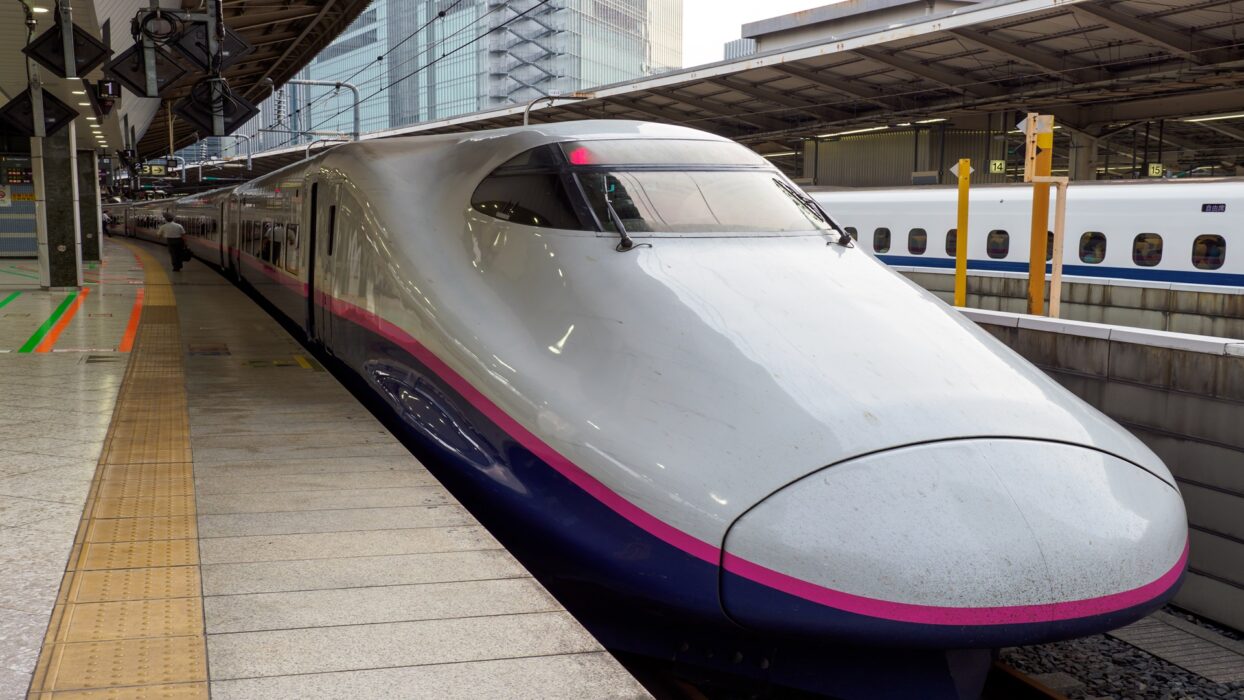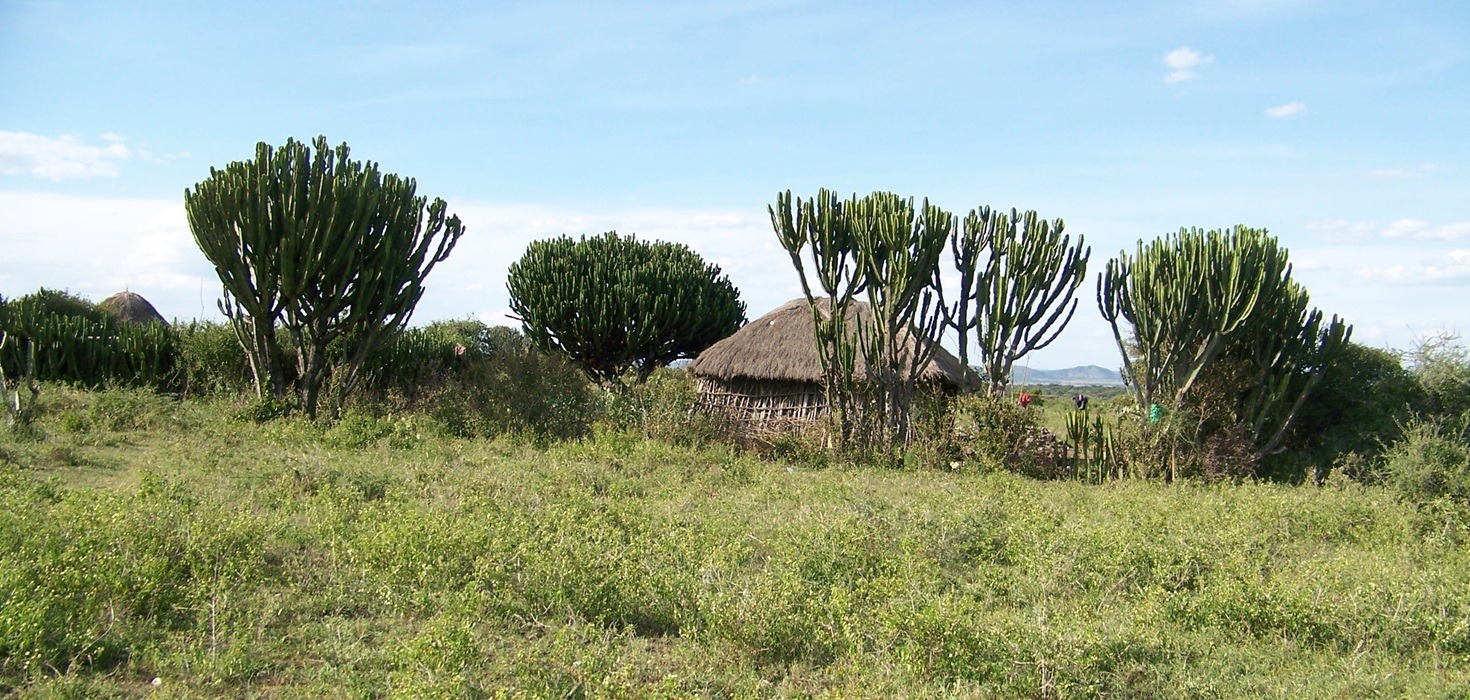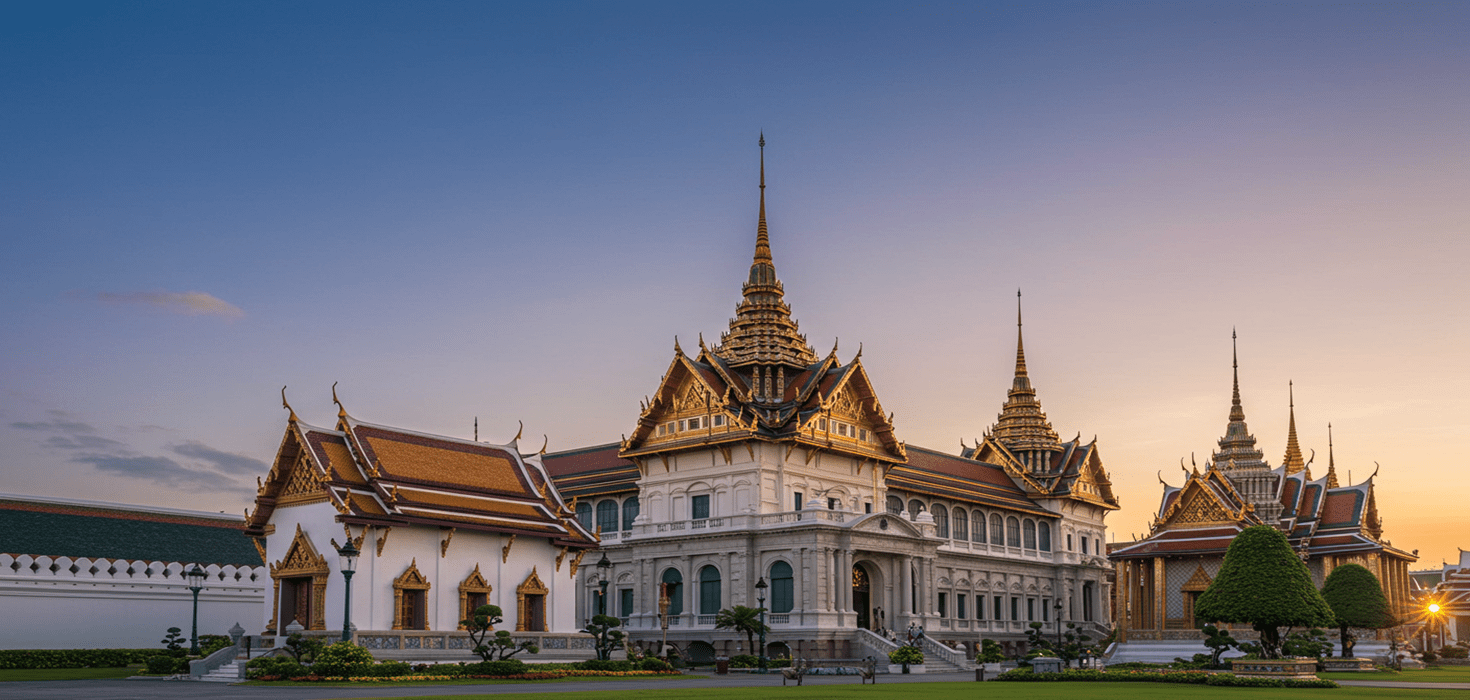Introduction
Welcome to Meiji Jingu, a serene oasis nestled in the heart of Tokyo that beautifully merges nature with Japanese culture. This Shinto shrine, dedicated to Emperor Meiji and Empress Shoken, stands as a testament to Japan’s rich cultural heritage. Surrounded by a lush forest, Meiji Jingu invites visitors to step away from the city’s hustle and bustle and immerse themselves in a tranquil environment that feels worlds apart from the urban landscape.
Throughout the year, Meiji Jingu transforms with the seasons, each bringing its own unique charm and cultural experiences. From the delicate pink cherry blossoms in spring to the vibrant hues of autumn leaves, every visit offers a new opportunity to connect with nature and partake in traditional Japanese festivities. Whether you’re seeking a moment of reflection, a taste of local culture, or simply a stunning backdrop for your photos, Meiji Jingu has something special to offer every traveler.
Discovering Meiji Jingu Shrine: A Cultural Gem in Tokyo
As you approach the Meiji Jingu Shrine, the first thing that strikes you is its impressive architecture, which harmoniously blends with the surrounding forest. The shrine’s main entrance, the iconic torii gate, stands tall and proud, marking the transition from the everyday world to a sacred space. The architecture reflects the simplicity and elegance of traditional Shinto design, characterized by its wooden structures and thatched roofs.
Stepping inside, visitors are greeted by the serene atmosphere that envelops the shrine grounds. The main hall, or honden, is adorned with intricate woodwork and is a site of worship where locals and tourists alike come to pay their respects. Shinto practices are deeply rooted in Japanese culture, and Meiji Jingu serves as a vital hub for these rituals. From offering prayers to purchasing charms, every action taken here is steeped in significance.
One of the unique architectural features of Meiji Jingu is its use of natural materials sourced from the surrounding forests, emphasizing the shrine’s connection to nature. The design promotes a sense of harmony and tranquility, making it a perfect spot for reflection and spiritual rejuvenation. This is not just another shrine; it’s a living piece of Japan’s cultural tapestry, waiting to be explored.
Seasonal Activities at Meiji Jingu: Nature’s Celebration
Visiting Meiji Jingu is a feast for the senses, especially as the seasons change. Spring brings a breathtaking display of Meiji Jingu cherry blossoms, typically peaking in late March to early April. The sight of cherry trees in full bloom against the backdrop of the shrine is nothing short of magical. For the best viewing spots, head towards the inner gardens where the trees are plentiful and the atmosphere is peaceful.
As the year progresses, autumn paints the shrine in fiery shades of red and gold, with Meiji Jingu autumn leaves reaching their peak around mid-November. The crunch of leaves underfoot and the crisp air create a nostalgic ambiance that is perfect for leisurely strolls. Don’t forget your camera, as the vibrant colors provide a stunning backdrop for photographs!
Throughout the year, Meiji Jingu also hosts various seasonal activities, from traditional New Year celebrations to summer festivals. Each event offers a unique glimpse into Japanese culture, making it a fantastic destination for those looking to experience the local traditions firsthand. Whether you’re there for the blossoms or the foliage, every visit to Meiji Jingu is an opportunity to connect with nature and culture in a meaningful way.
Festivals and Events: A Year-Round Celebration at Meiji Jingu
Meiji Jingu is not just a shrine; it’s a lively hub of cultural festivities that bring the community together throughout the year. With its rich traditions and vibrant celebrations, each festival offers a unique glimpse into Japanese culture. One of the most significant events is Hatsumode, the first shrine visit of the year, which attracts thousands of visitors each January. During this time, the atmosphere is electric, with people dressed in traditional attire, praying for good fortune and health in the year ahead.
Another highlight is the Aoi Matsuri, celebrated in May. This ancient festival features a stunning procession from the Imperial Palace to the shrine, where participants don exquisite Heian-period costumes. The sight of elegantly dressed individuals walking among the trees is truly a feast for the eyes. If you’re lucky enough to be in Tokyo during this time, don’t miss the chance to witness this remarkable event!
In November, Shichi-Go-San draws families to the shrine to celebrate the growth of their children. Dressed in beautiful kimono, kids aged three, five, and seven visit Meiji Jingu to receive blessings for health and happiness. The joyful atmosphere, combined with the colorful garments, creates a picturesque scene that’s perfect for capturing memories.
Beyond these major festivals, Meiji Jingu also hosts lesser-known events such as seasonal tea ceremonies and traditional music performances. These intimate gatherings provide a wonderful opportunity to experience Japanese culture up close. So, whether you’re visiting during a bustling festival or a quiet ceremony, there’s always something happening at Meiji Jingu!
Historical Context and Folklore: The Story of Meiji Jingu
Established in 1920, Meiji Jingu is a relatively young shrine compared to others in Japan, but it carries a profound historical significance. It was built to honor Emperor Meiji and Empress Shoken, who played pivotal roles in modernizing Japan during the Meiji Restoration. The shrine serves as a reminder of this transformative era, where Japan transitioned from feudalism to a more contemporary society.
As you wander through the shrine, you might hear whispers of folklore that add a layer of enchantment to your visit. One popular tale speaks of a sacred tree within the shrine grounds believed to grant wishes. Visitors tie their wishes on small wooden plaques known as ema, hoping for their dreams to come true. This practice connects people to the shrine’s spiritual essence, making it a truly meaningful experience.
Another fascinating story involves the forest surrounding Meiji Jingu. This lush greenery is not just a beautiful backdrop; it is a carefully preserved ecosystem that symbolizes the harmony between nature and spirituality. Many believe that the spirits of Emperor Meiji and Empress Shoken reside in these trees, watching over the shrine and its visitors. Such tales enrich your visit, inviting you to reflect on the deep-rooted traditions of the Japanese people.
Exploring Meiji Jingu Gardens: A Tranquil Retreat
As you step beyond the shrine, the enchanting Meiji Jingu Gardens await. Spanning over 170 acres, these gardens are a tranquil retreat from the city’s hustle. The meticulously maintained landscapes feature diverse flora, including over 100 varieties of trees, seasonal flowers, and serene ponds. Each corner of the garden offers a new perspective, perfect for leisurely strolls or quiet contemplation.
In spring, the gardens burst into color with cherry blossoms, while summer brings lush greenery and vibrant hydrangeas. Autumn showcases a stunning palette of reds and golds, and winter blankets the area in a peaceful stillness. Birdwatchers will delight in spotting various species, making it a haven for nature lovers.
Don’t forget to visit the Meiji Jingu Inner Garden, a hidden gem within the shrine complex. With its picturesque pathways and quaint tea house, it’s an ideal spot to relax and soak in the beauty of your surroundings. Grab a matcha tea and enjoy the serene atmosphere while listening to the gentle rustling of leaves.
Culinary Delights Near Meiji Jingu: A Taste of Tokyo
Your visit to Meiji Jingu wouldn’t be complete without indulging in some local culinary delights. The area surrounding the shrine offers a plethora of dining options, from traditional Japanese eateries to trendy cafes. Just a short stroll from the shrine, you can find Yoyogi Park, where food stalls and vendors pop up during weekends, serving delicious snacks like yakitori (grilled chicken skewers) and takoyaki (octopus balls).
If you’re in the mood for something sweet, don’t miss out on mochi, a glutinous rice cake often filled with sweet red bean paste. The texture is delightful, and it’s a perfect treat to enjoy while exploring the gardens. For a more substantial meal, consider visiting one of the nearby ramen shops, where you can savor a steaming bowl of rich broth and tender noodles.
For those looking to experience traditional Japanese dining, kaiseki restaurants offer multi-course meals that showcase seasonal ingredients. It’s a culinary art that reflects the beauty of Japanese culture, and dining at one of these establishments will surely be a memorable experience.
Practical Information for Travelers: Tips for Visiting Meiji Jingu
Planning your visit to Meiji Jingu? Here are some essential tips to ensure a smooth experience. The shrine is open year-round, and there’s no admission fee, making it accessible to everyone. The best time to visit is early morning or late afternoon when the crowds are thinner, allowing you to fully appreciate the tranquility of the grounds.
Getting to Meiji Jingu is easy! The shrine is conveniently located near Harajuku Station on the JR Yamanote Line. From the station, it’s just a short walk through the beautiful forested path leading to the shrine entrance. If you’re coming from Shibuya or Shinjuku, it’s only a few stops away!
For those with mobility challenges, the shrine is mostly accessible, with paved paths leading to the main hall and gardens. However, some areas may have uneven terrain, so it’s advisable to wear comfortable shoes. Don’t forget to bring a water bottle, especially during the warmer months, as exploring the grounds can be quite the adventure!
Photography Opportunities: Capturing the Beauty of Meiji Jingu
For photography enthusiasts, Meiji Jingu offers endless opportunities to capture stunning images. The shrine’s architecture, with its natural wooden structures, provides a beautiful contrast against the lush greenery. The iconic torii gate, particularly during the golden hour, creates a magical frame for your photos.
In spring, the cherry blossoms create a dreamy backdrop, while autumn foliage adds a burst of color. The serene ponds in the gardens are also perfect for reflection shots, especially with the surrounding trees mirroring in the water. Don’t forget to capture the lively atmosphere during festivals, as the vibrant colors and traditional attire make for fantastic candid shots!
For those looking to experiment with photography, consider visiting during different seasons to capture the changing landscapes. Early mornings or late afternoons provide the best lighting, so plan your visit accordingly!
Sustainability and Conservation at Meiji Jingu
As a beloved cultural site, Meiji Jingu is committed to preserving its natural environment. The shrine actively engages in conservation efforts to maintain the health of its surrounding forest. Initiatives include tree planting, habitat restoration, and educational programs that promote awareness of environmental issues.
Visitors are encouraged to respect the natural surroundings by following designated paths and refraining from littering. By doing so, you contribute to the preservation of this serene oasis, ensuring that future generations can enjoy its beauty. The harmonious relationship between nature and spirituality at Meiji Jingu serves as a reminder of the importance of caring for our environment.
Nearby Attractions: Exploring Beyond Meiji Jingu
While Meiji Jingu is a captivating destination on its own, there’s plenty to explore in the surrounding area! Just a short walk away is Yoyogi Park, a popular spot for picnics and outdoor activities. The park is especially lively on weekends, with locals enjoying sports, music, and food stalls.
Don’t miss the vibrant neighborhood of Harajuku, known for its quirky fashion and unique shops. Takeshita Street is a must-visit for those looking to experience Tokyo’s youth culture and indulge in delicious crepes and other sweet treats. For a more upscale shopping experience, head to Omotesando, where you’ll find designer boutiques and chic cafes.
If you have time, consider visiting the National Yoyogi Gymnasium, an architectural marvel that hosted the 1964 Tokyo Olympics. The striking design and historical significance make it a fascinating stop on your exploration of the area.
Seasonal Travel Insights: Planning Your Visit to Meiji Jingu
Planning your visit to Meiji Jingu? Timing can make all the difference! If you’re a fan of cherry blossoms, aim for late March to early April when the trees are in full bloom. Autumn foliage is at its peak around mid-November, offering a breathtaking display of colors.
During the summer months, you can experience lively festivals and events, while winter brings a serene atmosphere perfect for quiet reflection. Each season offers something unique, so consider what you’d like to experience most when planning your trip.
For those looking to avoid crowds, weekdays are generally less busy than weekends. Early mornings or late afternoons are ideal for enjoying the peaceful surroundings, allowing you to fully immerse yourself in the beauty of Meiji Jingu.
Safety and Health Guidelines for Visitors
Your comfort and safety are paramount during your visit to Meiji Jingu. As with any travel destination, it’s wise to stay hydrated and wear comfortable footwear, especially if you plan to explore the gardens. Be mindful of local customs, such as maintaining silence in sacred areas and following shrine etiquette, which enhances the experience for everyone.
In light of health guidelines, it’s recommended to carry hand sanitizer and wear masks in crowded areas. This ensures a safe and enjoyable visit for you and fellow travelers. Keep an eye on your belongings, and be respectful of the shrine’s peaceful atmosphere.
Commonly Asked Questions (FAQs) About Meiji Jingu
Curious about what to expect at Meiji Jingu? Here are some common questions visitors often ask:
- What are the opening hours? Meiji Jingu is open daily from sunrise to sunset, allowing you to visit at your convenience.
- Is there an entrance fee? No, entrance to the shrine is free, making it accessible for everyone!
- Can I participate in rituals? Yes! Visitors are welcome to partake in Shinto rituals, such as offering prayers and purchasing ema (wish plaques).
- Are there guided tours available? Yes, guided tours are offered, providing deeper insights into the shrine’s history and significance.
Fun Facts About Meiji Jingu: Did You Know?
Here are some fun tidbits about Meiji Jingu that might surprise you:
- The shrine is surrounded by a forest that spans over 700,000 square meters, creating a peaceful haven in the city.
- Meiji Jingu is home to over 100 species of birds, making it a popular spot for birdwatching.
- The shrine’s main hall is built using traditional techniques, with no nails used in its construction!
- Every year, millions of people visit Meiji Jingu to pray for health, happiness, and good fortune.
Detailed Day-by-Day Itinerary for Visiting Meiji Jingu
Want to make the most of your visit to Meiji Jingu? Here’s a suggested itinerary:
- Day 1: Arrive early in the morning to explore the shrine grounds. Take part in a morning ritual and enjoy the tranquility of the gardens. In the afternoon, visit Yoyogi Park for a picnic and check out the nearby shops in Harajuku.
- Day 2: Plan your visit around a festival day to experience the lively atmosphere. Capture photos of the vibrant processions and partake in traditional food stalls. Spend the evening enjoying local cuisine at a nearby restaurant.
- Day 3: Dedicate this day to exploring the gardens and taking part in a seasonal tea ceremony. Relax at the tea house and enjoy the beautiful scenery before heading back to the shrine for a final visit.
With its rich history, cultural significance, and stunning natural beauty, Meiji Jingu is a must-visit destination in Tokyo. Whether you’re seeking a moment of peace, a taste of local traditions, or simply a beautiful place to explore, this shrine offers it all. So pack your bags, grab your camera, and get ready for an unforgettable adventure at Meiji Jingu!










